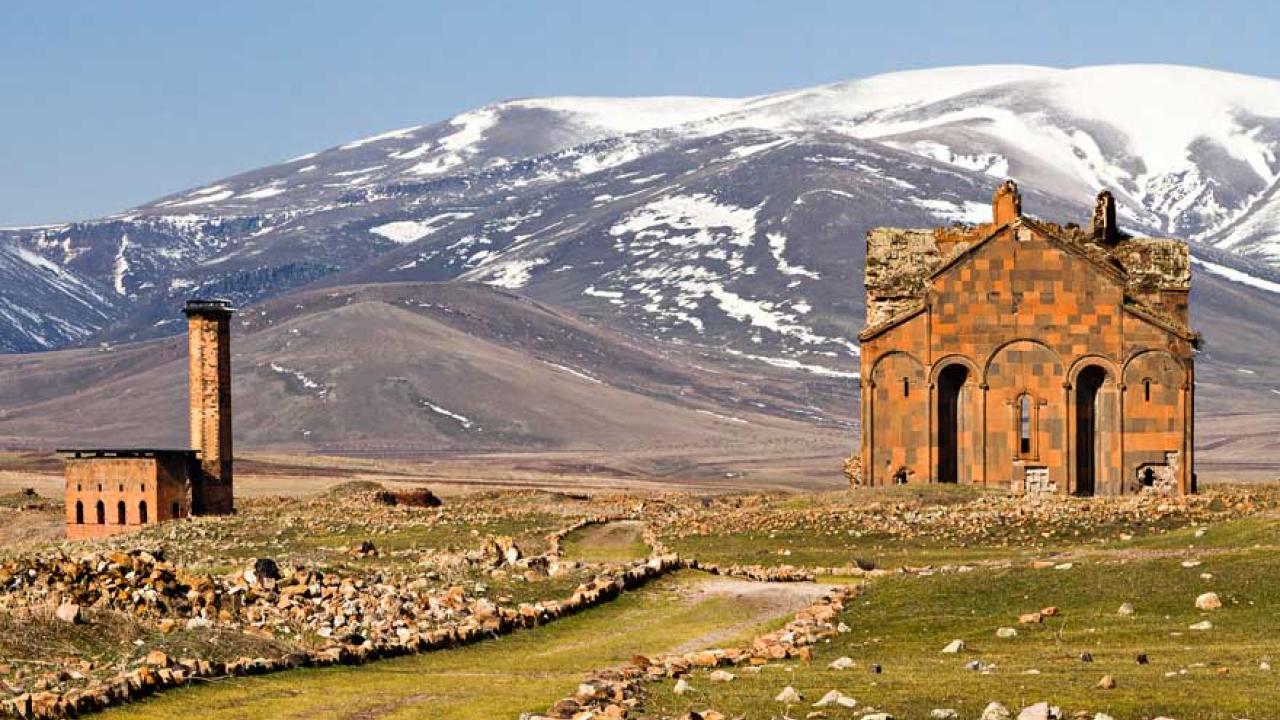This blog, by UC Davis Media Relations Intern Hayley Morris, is partly taken from TheArtNewspaper story here.
An agreement between Turkey and the United States to combat the illicit trade in antiquities and other cultural property has divided historians and preservationists over whether the accord will curb smuggling or undermine minority heritage that faces neglect, or worse.
Heghnar Watenpaugh, a professor of art and architecture at the University of California, Davis, will speak on such issues at a colloquium this week. Karima Bennoune, U.N. Special Rapporteur in the field of Cultural Rights and professor of law, UC Davis School of Law, will join her on the panel. “The Recent Developments in the Protection of Cultural Heritage,” will be held online Feb. 18 at 9:30 a.m.
A memorandum of understanding signed last month imposes U.S. import restrictions on archaeological objects 250 years or older that the Turkish government has not licenced to leave the country. The aim is “to reduce the incentive for pillage of irreplaceable archaeological and ethnological material representing Turkey’s cultural heritage,” according to the agreement, which becomes binding once the governments notify each other that their procedures for enforcement are ready.
The agreement intends to combat the circulation of antiquities, expand cultural exchanges between the two countries, which could encourage more traveling exhibitions or long-term loans between US and Turkish museums, and eases challenges for American archaeologists who face bureaucratic hurdles in leading excavations.
Still, the history of Armenians, victims of a genocide by Ottoman Turks during the First World War, is especially bitter in a country that still denies that the massacres amounted to genocide. Erasure of Armenian culture continues to this day: In recent weeks, a church was put up for sale and another was bulldozed.
Heghnar Watenpaugh said in the story that she worries that the pact may be a form of “artwashing” to deflect attention from the harm that Turkey’s cultural policies have inflicted on sites like Ani, the former seat of an Armenian kingdom where work to rescue collapsing medieval monuments and defaced church art has moved at a glacial pace despite its World Heritage status.
“If this agreement indicates that the Turkish state is now upholding its international commitments to cultural heritage, that would be welcome. But we still have to ask questions about the diversity [of heritage] when a state is unable to utter the words ‘Armenian’ or ‘Kurdish’ when talking about its culture. It is a question of trust, given the non-acknowledgement of the past.” — Watenpaugh, on the pact between the U.S. and Turkey
Book documents journey of illuminated manuscripts
Watenpaugh’s 2019 book, The Missing Pages, documented the journey of a portion of a 13th-century illuminated manuscript to the J. Paul Getty Museum in Los Angeles and efforts by the Armenian Church to recover it. Protected for centuries in a remote church, the holy manuscript had followed the waves of displaced people exterminated during the Armenian genocide. Decades later, the manuscript found its way to the Republic of Armenia, while its missing eight pages came to the Getty. In 2010, the Armenian Church sued for the return of eight pages from the Zeytun Gospels. It was settled that the Getty would keep the manuscript whilst acknowledging that the church has always been the rightful owner of the pages.
Watenpaugh follows in the manuscript's footsteps through seven centuries and captures the human costs of war, making the case for a human right to art. Her documentation reveals the intricacies involved in navigating the history of historical genocide and cultural heritage.
